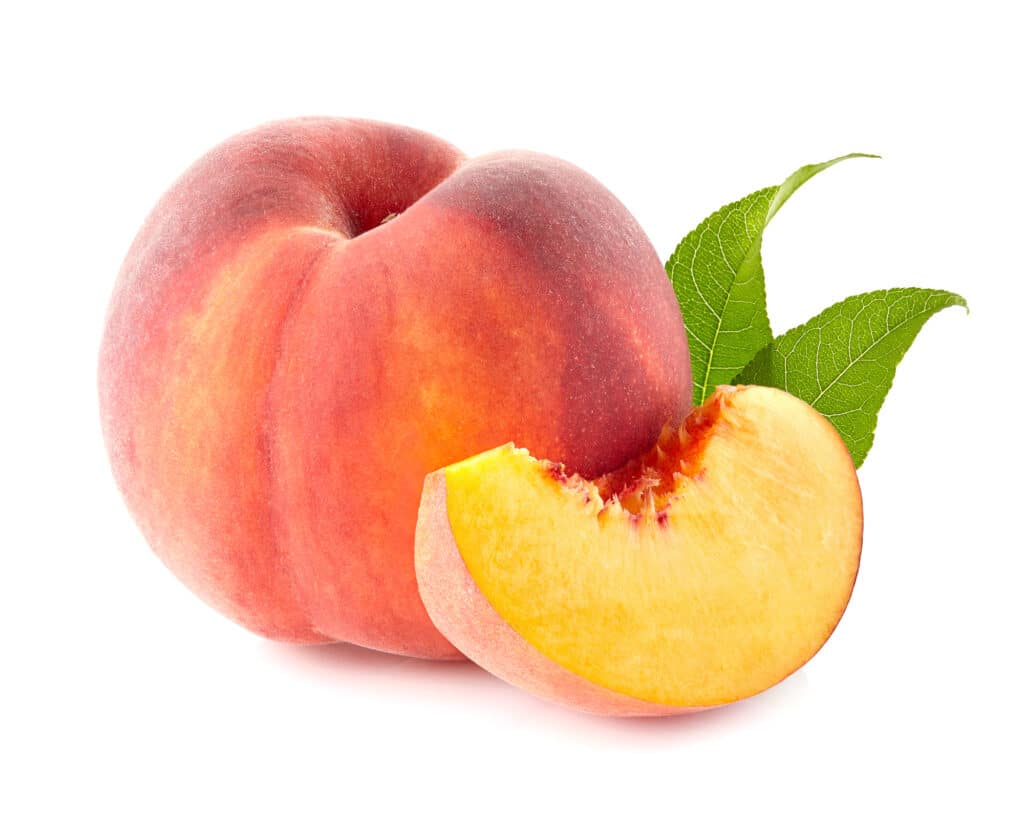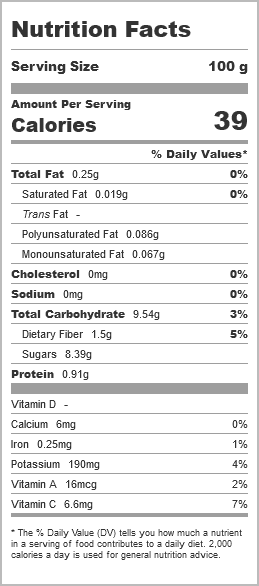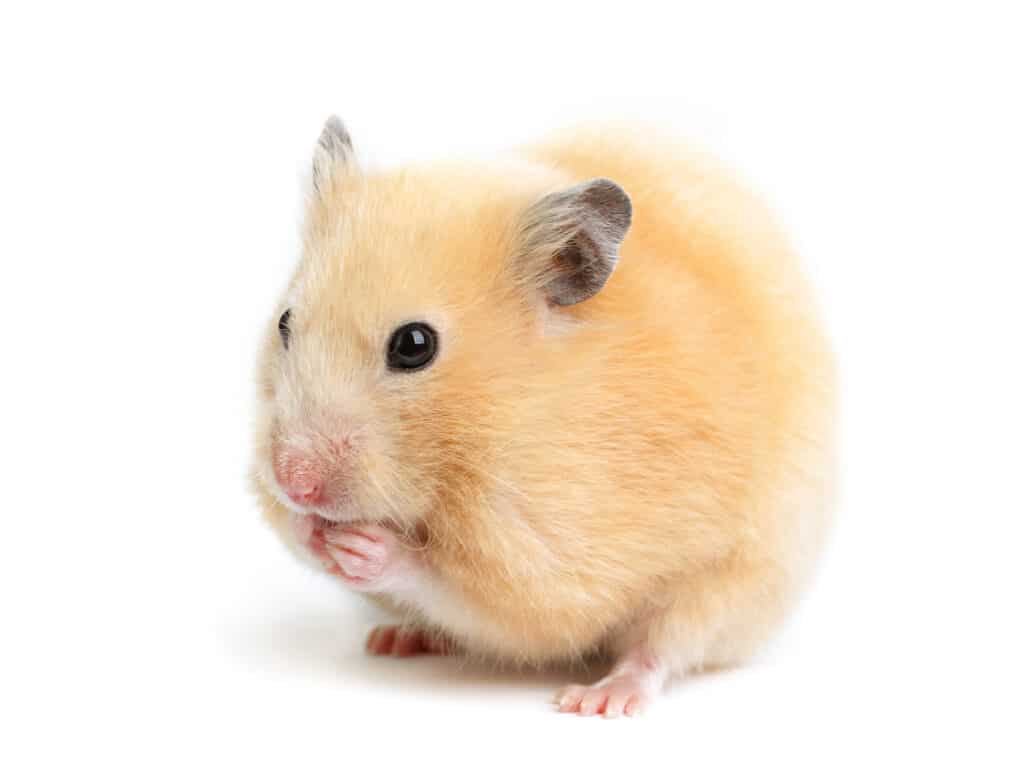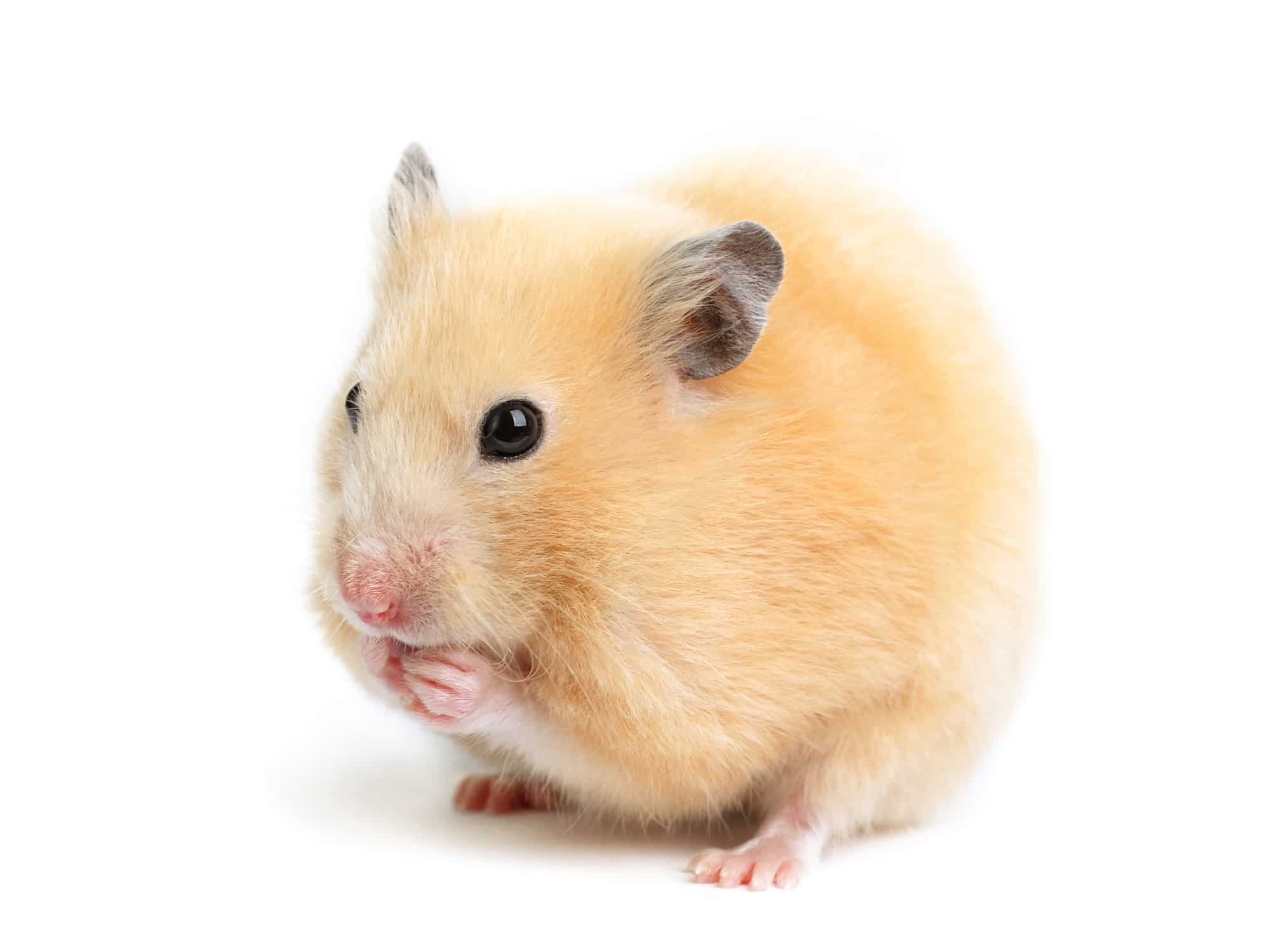Peach is a fruit that offers several health benefits. It improves immunity, keeps the heart healthy, and fights against some cancers. But is it safe for hamsters? Can hamsters eat peaches? Read and find out.
Peach
Origin
Peaches are known to have originated in China and gradually spread westward across Asia to the Mediterranean nations and to Europe. The Spanish explorers who came to China took these juicy fruits to the New World. For centuries, the cultivation, as well as selection of this fruit, was confined to the nobles and royals until commercial peach cultivation began in the US in the 19th century.
According to a Korean legend, peaches are the fruits of richness, longevity, happiness, and honor. These succulent fruits have been cultivated since ancient times. As it was considered one of the ten immortal greens, you will find tons of paintings with peach references. Some people also believe that peaches have the power to chase away bad omens and evil spirits.

Peach trees are comparatively short-lived than other fruit trees. In certain parts of the world, peach trees are sometimes replanted every eight to ten years, depending on how much they can resist pests, diseases, and other damages. Peach trees cannot tolerate severe cold, although they can grow satisfactorily in places with mild winters. Even though gravelly loams or sandy soil are best fit for peaches, they grow pretty well in almost any type of soil.
Today thousands of different species of peaches are found across the world. In North America, yellow-fleshed variants like Redhaven, Halford, and Elberta are popular, whereas, in Europe, both the white and yellow-fleshed variants are popular.
Nutritional content in peaches
Surprisingly, peaches are not endowed with copious amounts of nutrients. But a single cup of diced peach gives around 11.1 mg of Vitamin C and contains the recommended daily allowance of essential nutrients like iron, fiber, and potassium. Even though peaches have a low nutrient profile, these fuzzy fruits can benefit our health as a critical part of a balanced diet that includes an array of fruits and vegetables.
Moreover, peaches can also be used in desserts and delicacies and easily replace harmful added sugars.

(Source: Fat Secret)
Can hamsters eat peaches? Are peaches safe for hamsters?
It goes without saying that we love and adore our hamsters. But a crucial aspect of caring for these little animals is that you feed them the right food that is not only tasty but also healthy. If we fail to do that, they can face serious health issues.
But peach is not something that can affect your hamster’s health adversely. On the contrary, it is healthy for your pet. All you need to do is ensure that the fruit is served in the right quantity and the right way. But before that, you need to understand the risks and health benefits of feeding these delicious fruits to your hamsters.
Health benefits of peaches
Improving digestive health
Peaches contain a decent amount of dietary fiber. 100g of peaches contain around 1.5g of fiber, half of which is soluble fiber, and the rest is insoluble fiber. Insoluble fiber attracts water to the stool, making it softer and easier to pass through the bowel, thereby preventing constipation (Source: Healthline).
Soluble fiber acts as food to the beneficial bacteria in the gut, thereby benefiting gut health and preventing digestive disorders.
Effective against cancer
Like other fruits and vegetables, peaches are a rich source of antioxidants. Antioxidants are chemical compounds that neutralize free radicals, the natural byproducts of cellular activities which damage DNA, causing cancer and other chronic diseases.
In particular, peaches are a good source of plant-based compounds called polyphenols. Laboratory studies show that the polyphenols found in peaches can be effective in suppressing growth and reducing the spread of some types of cancer cells (Source: PubMed). Moreover, the polyphenols found in peaches may also be able to kill breast cancer cells without damaging the healthy cells in the body (Source: PubMed).
Experimental studies on mouse skin found that the compounds in peach seeds can be effective in both inhibiting the growth of skin tumors and preventing them from becoming cancerous (Source: PubMed).
Reducing allergy symptoms
The immune systems of our bodies are useful in protecting us from invisible pathogens. But sometimes, they can also identify harmless substances, like pollen, dust, pet dander, etc., as threats and react, signaling the body to release histamines. Histamines can cause the body to create allergic reactions, like coughing, sneezing, etc., trying to get rid of these foreign bodies.
But peach may alleviate allergy symptoms by preventing the release of histamines into the blood.
Keeping the heart healthy
Peaches are a very good source of plant compounds called flavonoids, which may prevent cardiovascular diseases (Source: PubMed).
Peaches contain almost no sodium and a decent amount of potassium. Too much sodium can lead to increased blood pressure, heart disease, and stroke. But potassium protects the body from the harmful effects of sodium. It also helps the heartbeat stay regular and keeps the blood pressure under check.
Keeping the skin healthy
Peaches may improve the ability of the skin to retain moisture. Peach may also protect your hamster from skin tumors.
Boosting immunity
Peaches contain decent amounts of Vitamin C and antioxidants that boost the functioning of the immune system.
Risks
All small pets are susceptible to developing diabetes, and therefore any food with high sugar content is not suitable for them. Besides diabetes and obesity, too much sugar can also cause dental problems, lethargy, and laziness and make your hamster’s bones weak.
Dental problems
Hamsters tend to store food in their cheek pockets. Sugar-rich foods like peaches are likely to cause severe oral and dental issues. So, you shouldn’t feed too much peach to your hamster.
Bacterial growth
Hamsters also store food in their living places that they attempt to consume later on. It is vital that you remove all the uneaten foods to avoid the risk of bacterial development. You must also check their cheek pockets regularly to ensure that they are not storing food, as it can lead to several problems.
Different breeds of hamsters vs. peaches
Now that you know you can give peaches to your hamsters, it’s time to find out how much peach you can give to your hamster. But this is not a simple question to answer because there are different types of hamsters. So, let’s find out how much peach each pet hamster species can eat.
Can Chinese dwarf hamsters eat peaches?
Chinese hamsters are tiny animals. So, feeding them excess sugar can be harmful. A tiny piece of peach once in a span of ten days to two weeks will be ideal for them. Otherwise, they can become obese and diabetic.
Can Campbell dwarf hamsters eat peaches?
Campbell dwarf hamsters also fall under the category of dwarf hamsters. So, they are also susceptible to obesity and diabetes. Hence it’s better to feed only a small piece of peach to your Campbell hamster once in two weeks.
Can Russian dwarf hamsters eat peaches?
As you can understand, the rule of feeding peaches to all dwarf hamsters is the same. This means you cannot allow them to overeat this sugary fruit. So, Russian dwarf hamsters should only be fed a tiny slice once in two weeks.
Can Roborovski hamsters eat peaches?
Roborovski hamsters are the smallest hamster species. But they are also extremely active. So, their bodies burn sugars faster than dwarf hamsters. Therefore, they are not as susceptible to diabetes and obesity as dwarf hamsters.
So, you can give a Roborovski hamster a small piece of peach once a week. This piece should be small enough for your Robo hamster to hold in his paw.
Can Syrian hamsters eat peaches?
Syrian hamsters are the largest pet hamsters. So, you can give your Syrian hamster a small slice of peach once a week. But you have to ensure that this slice is no larger than what he can hold in his paw, as it can increase the sugar content in his body.
FAQ
Can hamsters eat a whole peach?
Hamsters are tiny creatures. So, they can easily get diabetes if you give them too many sugary food items. Therefore, never give a whole peach to your hamster to eat, not even to Syrians or Robos.
Can hamsters eat peach pits?
Hamsters love to eat almost anything you give them. But that doesn’t mean you can give peach pits to your hamsters. These seeds are too big for your hamster to eat. So they can get lodged in their throats and may cause choking.
Moreover, peach pits also contain a chemical called amygdalin, which gets converted into cyanide upon digestion. Therefore, you must always ensure that you remove the pits before feeding peaches to your hamster.
Can hamsters eat peach skin?
Yes, hamsters can eat peach skin, provided that you wash it well. This will remove all the dirt and harmful chemicals like pesticides on the fruit skin. These chemicals are extremely harmful to hamsters. But sometimes, mere washing won’t get rid of all the chemicals on the skin. So, buy peaches that are organically cultivated.
Other things to watch out for
White peaches are a better choice for hamsters than ordinary peaches that we are fond of. This is because the latter contains a higher amount of acids, and the digestive systems of hamsters cannot tolerate too many acids. White peaches also taste sweeter due to their lower acid content. .
You should never serve canned or dried form of peaches to your hamsters since both variants contain additional sugar, artificial colors, and preservatives. All these chemicals are highly toxic for hamsters.
Owing to the high sugar content of peaches, these pulpy fruits cannot make it to the staple diet of any small pets, including hamsters. However, it can be fed to them as occasional treats. You must not feed peaches to your hamsters when they are suffering from any ailment.
Summary: Key takeaways
Hamsters love peaches just as we humans do. And like all the good things in life, it must be fed to them in moderation only. Your hamster will definitely want to have peaches in copious amounts, but as a responsible pet parent, you have to restrict their peach intake considerably. Also, it’s worth noting here that baby hamsters cannot have peaches at all, not even in tiny quantities.
To introduce peaches to your hamster, you can start by feeding small amounts and see how your pet reacts.
After feeding the first serving of peaches, keep an eye to check for any signs of laziness or sickness. If your pet is fine, you may gradually increase the serving amount.
How to give peaches to hamsters?
First of all, you must ensure that the fruit is thoroughly cleaned. This will rule out all concerns surrounding pesticides or any other substance harmful to your hamster’s health.
Next, you have to cut the fruit into small pieces. Before you serve the pieces to your hamster, make sure that it doesn’t include the pits.
Then give your hamster a small piece of peach to see if he likes the fruit. Sometimes, he might just stuff the food in his cheek pouches. So, make sure that he actually eats the fruit. If he likes the fruit and eats it, everything’s fine.
After a few hours, take out all the uneaten peaches from the cage as it can lead to the building up of bacteria and infections.
Make sure you include peaches as a part of your hamster’s healthy diet which comprises carrots, cabbage, pumpkin seeds, and other things that your hamster eats regularly. You must not overfeed peaches as they can lead to serious health complications.



